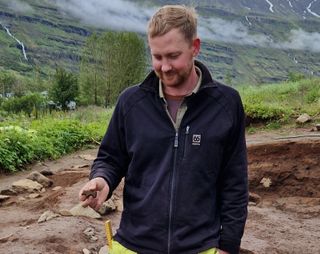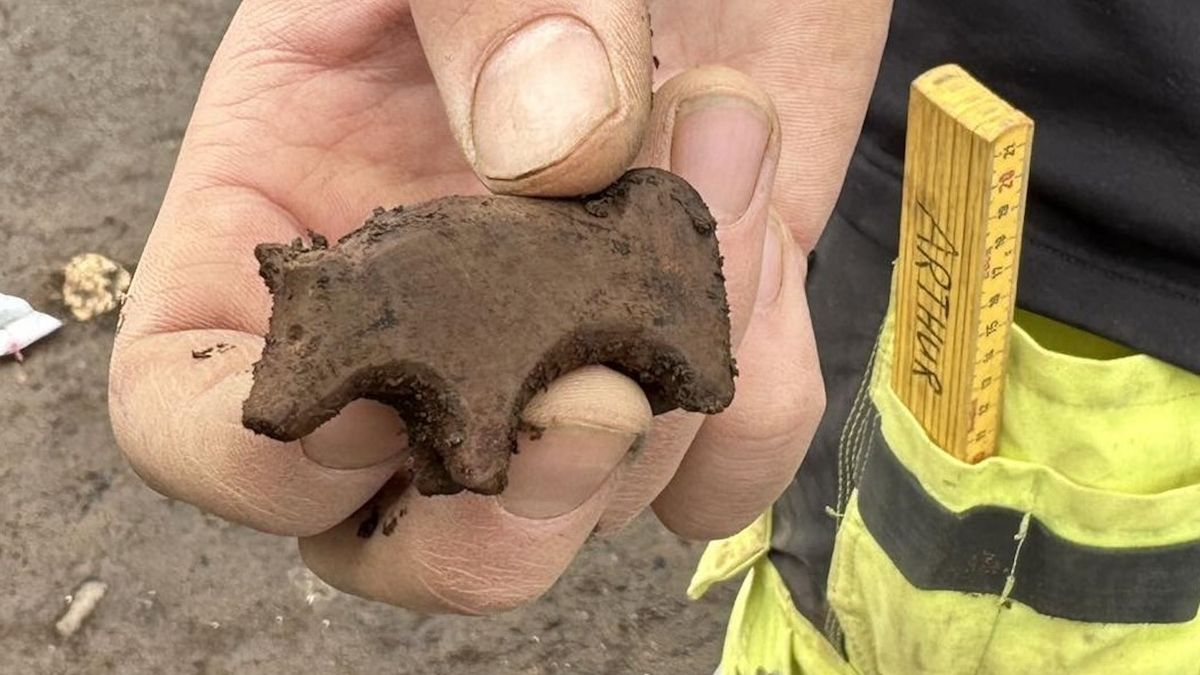Archaeologists in Iceland have discovered what may be a rare Viking Age toy carved out of stone, but it’s anyone’s guess as to which animal it depicts.
The figurine, which experts dated to between A.D. 940 and 1000, was found at the Fjörður excavation site in Seyðisfjörður, Iceland. It’s a small, four-legged animal with a chipped ear carved from local stone.
Most of the team thought the animal was a pig, Ragnheiður Traustadóttir, director of the Antikva archaeological team that unearthed the toy, told Live Science. This isn’t far-fetched, since Vikings used domesticated pigs for meat. Two team members, however, interpreted it as a bear, and while bears are not native to Iceland, at least 600 polar bears (Ursus maritimus) have been reported on the island since human settlement began to today. But when pictures of the figurine were posted on Facebook on Aug. 13, many Facebook users became convinced that it represented an Icelandic dog.
“Children are not so visible in the Viking Age, so this is an amazing find,” Traustadóttir said. The director sees a pig and is skeptical about the Icelandic dog interpretation, as she says the face doesn’t match the animal. “I owned an Icelandic dog for 14 years,” Traustadóttir said. “I’m not sure.”
The Fjörður excavation, named after the historical Fjörður farm, began in 2020 ahead of the planned construction of avalanche protection walls in Seyðisfjörður and was supposed to last only two years. But the excavation revealed so much that Traustadóttir is now in her fifth summer there.
Related: 1,200-year-old ‘Viking graffiti’ is the oldest drawing ever discovered in Iceland
In 2021, archaeologists uncovered a farm mound, mill and sheep shed dating to sometime between the 18th and 20th centuries, per Seydisfjord Archaeological Research, a website run by Antikva that publishes findings from the Fjörður excavation. Beneath that, they found medieval remains, and beneath those, they discovered four Viking Age (A.D. 793 to 1066) graves buried beneath an 11th-century landslide.
In other words, a single excavation had revealed 1,000 years of Icelandic history. In 2022, south of the previous site, the archaeologists discovered a Viking longhouse with a weaving room, animal enclosures and a farm midden, or trash heap, dating to between the 11th and 13th centuries. They placed their findings on this historical timeline by dating the layers of ash from the many volcanic eruptions that have impacted the region since the arrival of human settlers.

“There’s no other site in Iceland that has so many finds,” Traustadóttir said. In five years of archaeological work, they’ve cataloged up to 4,000 artifacts, including nearly 100 Viking game pieces from a board game called “hnefatafl” that were crafted from the same type of stone as the toy.
While it’s impossible to know exactly who carved these objects and why, Traustadóttir offered one possibility.
“Someone sat in the winter night, in the dark, carving chess pieces,” Traustadóttir mused, “and then this animal for a child.”
The excavation is due to wrap up soon, after which the archaeologists will begin studying the thousands of artifacts they have recovered.
